Coronavirus: Most New COVID-19 Cases Are From People Staying In Their Homes
The reported infections and deaths from the Coronavirus have jumped dramatically worldwide and they continue to change by the hour.
This article is more than 2 years old
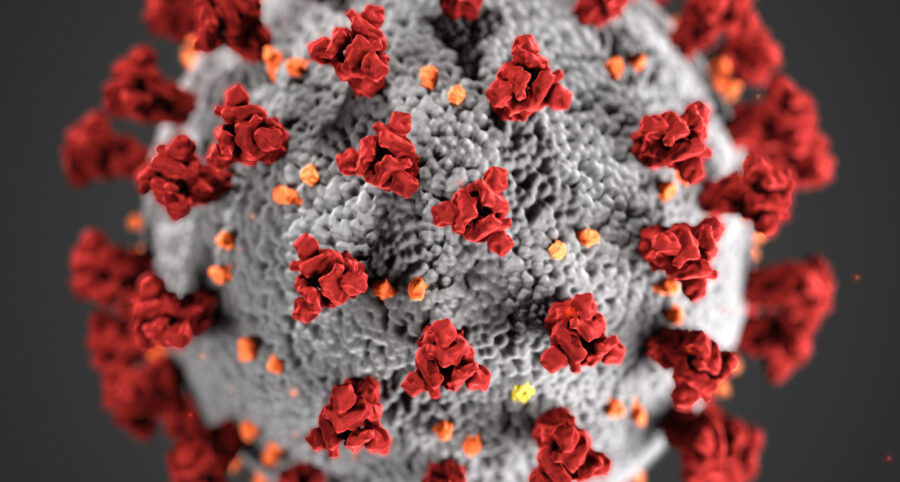
The news on the Coronavirus which originated in Wuhan, China continues to cause concern as the numbers of the infected and death toll rise.
The reported infections and deaths from the Coronavirus have jumped dramatically worldwide and they continue to change by the hour. The outbreak has been particularly devastating in New York City.
COVID-19 Breaks Through Quarantine
On May 6, 2020 New York Governor Andrew Cuomo shared new data from the hospitals in his state which indicates that the government’s stay at home order may not be working to stop the spread of COVID-19.
According to Cuomo, more than 66% of the new Coronavirus cases discovered by testing came from people who have been quarantined in their homes. The data came from 1200 patients at 113 hospitals surveyed over a 3-day period. The majority of these patients were over 51-years-old, and were all either non-essential workers who aren’t going to their jobs anymore or people who are retired.
96% of the positive tests were from people with comorbidities, or in other words they had other chronic conditions which affected their health before they contracted the Coronavirus.
Coronavirus In China – April 17, 2020
Though China was the origination point of COVID-19, the country has been reporting zero deaths for weeks now. Experts have been extremely skeptical of these numbers and this morning their view seems to have been confirmed when on April 17, 2020 China suddenly started reporting deaths in the thousands.
Specifically they added nearly 1300 fatalities out of the blue…

China claims the new additions were merely an oversight added after the fact, and not an indication that the Coronavirus has gained a new foothold in their country. Many experts remain skeptical and insist that China is lying about the number of deaths and infections in their country, and has been doing so all along.
To see just what effect this has had on China, look no closer than these aerial pollution maps taken by NASA before and after the Coronavirus outbreak…
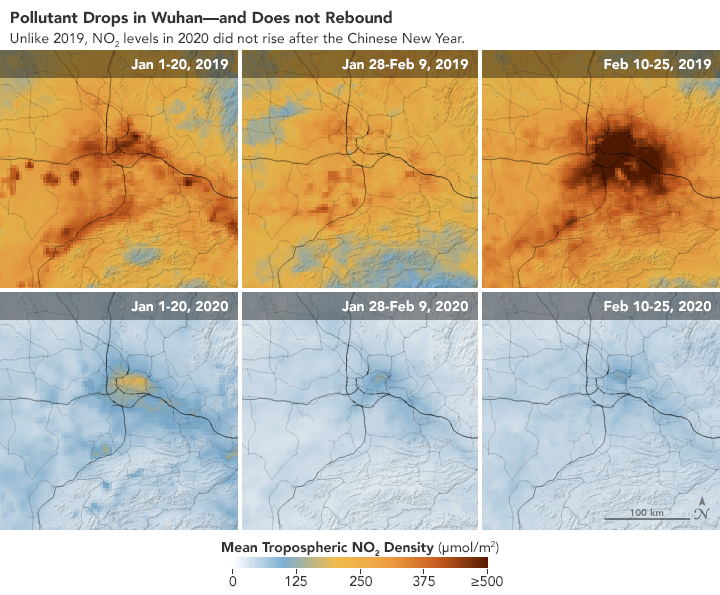
It’s not just in the Wuhan area that pollution levels in China have suddenly dropped to almost zero. The effect is nationwide, as demonstrated by this photo from NASA…

WHERE THE CORONAVIRUS CAME FROM
There have been a number of theories about where the Coronavirus actually came from. Until recently the leading indicator was that the virus originated in a Wuhan, China wet market. But China has already reopened those markets, an odd move if that’s where they believe it came from. Now we may know why.
According to government cables unearthed and put together by the Washington Post US officials were raising red flags about the safety conditions at the Wuhan Institute of Virology back in 2018. The lab was conducting research on coronaviruses in bats.
In particular one message from January of 2018 published by the Post says, “during interactions with scientists at the WIV laboratory, they noted the new lab has a serious shortage of appropriately trained technicians and investigators needed to safely operate this high-containment laboratory.”
According to the WaPo’s report, a number of diplomats and scientists had ongoing concerns about the lab’s sloppy safety protocols resulting in the transmission of the viruses they were testing to humans. Those diplomats said at the time that the researchers work, “strongly suggests that SARS-like coronaviruses from bats can be transmitted to humans to cause SARS-like diseases”
Even if this is where the current Pandemic originated, that doesn’t mean the virus was created in a lab. It would only mean the virus escaped from there and was transmitted to people from the lab. The lab itself was likely testing naturally occurring coronaviruses and those may have escaped accidentally via animal to human transmission.
As virologists have studied the genetic code of 2019-nCov, they’ve found it closely resembled two bat SARS-like coronaviruses from China. This first suggested that bats were the source of the new virus. But as they further studied the virus, it was compared to coronaviruses from different animal hosts such as birds, marmots, manis, hedgehogs, snakes, and humans, they were surprised to find that the protein codes in this new virus most closely resembled those found in snakes.
In the wild, snakes typically hunt for bats. This is one on how it reached humans as the Wuhan market has been reported to have sold snakes. Another mystery scientists are trying to solve is how this virus could adapt to both warm-blooded and cold-blooded hosts. Having the animal carried virus escape from a lab could solve that question.
TRACKING CORONAVIRUS LIVE
The situation with the Coronavirus seems to be changing minute by minute. With news media outlets hungry to cash in on people’s fears, it can be difficult to keep track, especially on a local level. But there’s a solution.
In order to try and help people keep track of what’s real, Johns Hopkins University has put together an online dashboard which uses live information from official sources to track the virus worldwide. It looks like this…
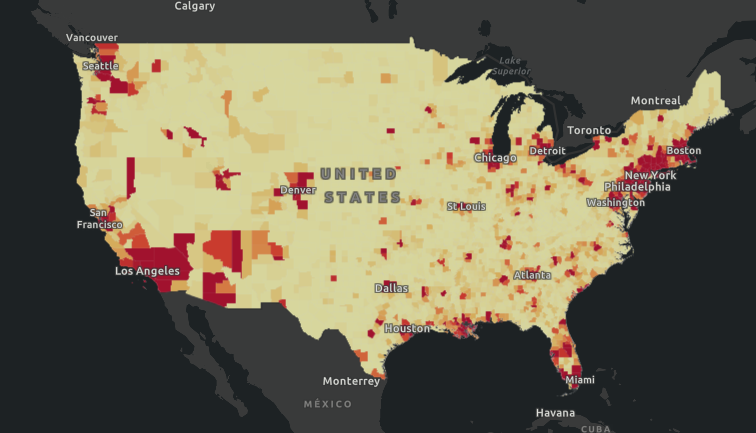
…and you can use it in real-time right here.
One of the best things about the Dashboard is that it gives you surprisingly detailed information on a local level. You can zoom in to your specific county and see information like this…

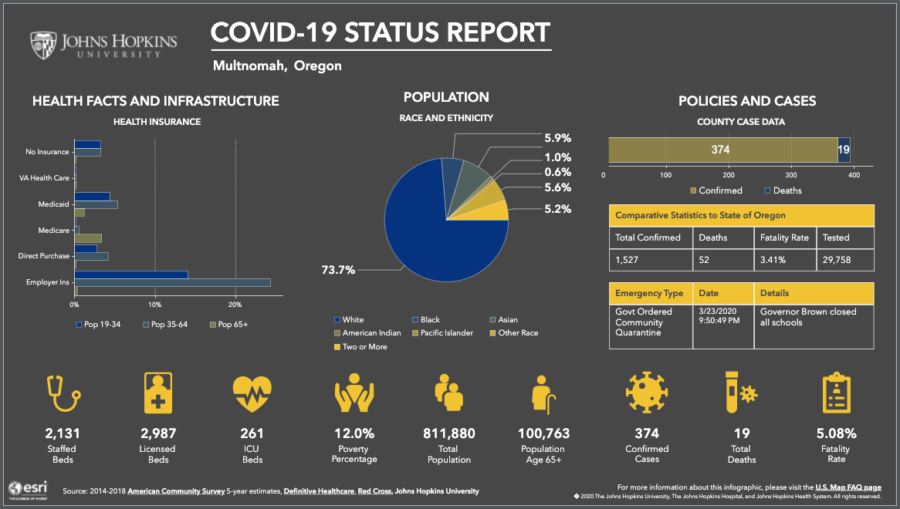
That’s incredibly useful given that the outbreak has been different, with different risk factors in different areas. Meanwhile most of the nation’s media outlets are focused on reporting on New York. But if you aren’t in New York, this may be your only way to know what’s actually happening with COVID-19 near you.
Bodies Stacked In Mass Graves
As of April 10, 2020 over 7000 people have died from the Coronavirus in New York alone. Their current death rate is approaching nearly 1000 deaths a day. And the bodies are starting to stack up.
The following drone footage shows what the government is doing with their Coronavirus victims…
The bodies being buried are those who haven’t been claimed yet by anyone. The New York Medical Examiner’s office has shortened the amount of time they’ll hold unclaimed remains to fourteen days before those bodies will be taken and buried on Hart’s Island.
Hart’s Island is located in The Bronx at the western end of Long Island sound. It has been used for mass burials before, usually it’s used for the bodies of people who are unidentified and unclaimed. There have been other mass burials of disease victims there in the past too, and it is believed the island has up to a million bodies buried beneath its dirt.
How Long The Coronavirus Survives On Surfaces And In The Air
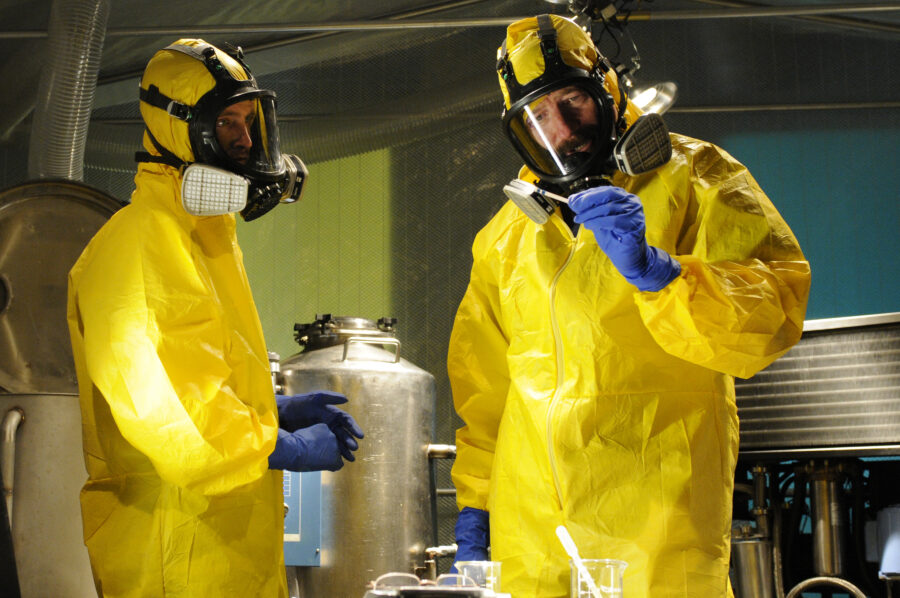
A new study just released by the New England Journal of Medicine answers one of the biggest questions people have had on their minds: How long can the Coronavirus survive on surfaces and in the air? Or in other words, if someone sneezed on a table two days ago and then I touch it, can I contract the Coronavirus?
The bad news from the study is that the Coronavirus can indeed survive out in the open. Their data shows that COVID-19 (also called SARS-CoV-2) could survive floating around out in the air for up to three hours. However, when it is released through a cough or a sneeze specifically, that number goes down to sixty-six minutes. After that sixty-six minutes only half the particles are still infections and that number drops as time goes on.
That means if someone sneezes and expels Coronavirus into the air, it could blow around in the breeze for up to sixty-six minutes and end up in your lungs after the infected person who expelled it is long, long gone. It also means you could contract it without being in close proximity to a carrier and that keeping a social distance of 6 feet between people isn’t really a protection.
As for how long Coronavirus can survive on surfaces, the news is even worse. Their study shows that COVID-19 can survive on surfaces like plastic or stainless steel for up to 72 hours, with a half-life of over six hours. Those numbers go down on other types of surfaces. On cardboard for instance, Coronavirus can only survive for twenty-four hours.
To put that in context: If someone coughs Coronavirus on to a stainless steel table and leaves, then you come by six hours later and touch it, you now likely have the Coronavirus on your hands. Again, social distancing may not be much protection from this kind of transmission.
For now this study is still new and has yet to be full reviewed by peers. It may turn out to be totally wrong, so keep these findings in that context.
Curing COVID-19
With all the craziness that COVID-19 has introduced around the world, one of the things rarely talked about is a cure. To date, most of the conversation has revolved around how the virus is transmitted, how to stay safe, the damage it has done, the world economy. But not much has been said about an actual cure. That could start to change.
We go in depth on what’s being done to eradicate the Coronavirus right now in A Coronavirus Cure: We’re Closer Than You’d Think To Beating COVID-19.
Stricken Celebrities

A number of big celebrities have now contracted the Coronavirus. That list includes Tom Hanks and his wife Rita Wilson, Idris Elba, and Olga Kurylenko. For the most updated list and statuses on each visit our full Coronavirus: The Most Famous People To Test Positive For COVID-19 So Far article.
Coronavirus In Prisons
Prisoners around the world are struggling to deal with the consequences of the Coronavirus. Some have decided to start releasing prisoners, rather than risk the infection sweeping through their prison population. In other places, prisoners who haven’t been let out are rioting and escaping.
- Go in-depth on this topic with Coronavirus: Prisons Are Releasing Inmates To Protect Them From COVID-19
CAN’T BE CONTAINED
When it comes to an outbreak, containment is the first response. If whatever sickness can be kept to a small area, then the chances of eradicating it multiply tenfold. So, when Harvard epidemiology professor Marc Lipsitch spoke with the Atlantic, he can be forgiven if it took him a couple tries to fully state his thoughts. It boiled down to this, “I think the likely outcome is that it will ultimately not be containable.” The numbers are beginning to prove this true. To date, 37 countries have been affected with COVID-19, the coronavirus.
The Chinese government has been under much political pressure to stop the virus, so much so that they are sending officials door-to-door in the Hubei province, testing people and looking for signs of illness. Is this a case of too little, too late? Lipsitch thinks so. He is predicting that within the coming year, 40 to 70 percent of people in the world will have become infected with the virus that causes this strain of the coronavirus.

Lipsitch did stress, though, that it doesn’t mean those 40 to 70 percent will have the severe illness. “It’s likely that many will have mild disease, or may be asymptomatic,” he told The Atlantic. Most people get though influenza without much issue. Many of those who take a turn for the worse are typically those with chronic health issues or older people.
And Lipsitch isn’t alone among his epidemiologist peers in their belief that this coronavirus will continue to spread wide scale. As quick as this is to spread and as serious as it has shown to be, the prevailing thought is that cold and flu season could easily turn into cold, flu and COVID-19 season.
So is there a chance for Coronavirus containment? At the rate it’s moving, maybe not. But the only way we will know how widespread it is becoming is by testing. When the outbreak first started, U.S. doctors had been advised to only test those who had traveled to China or had come in contact with a person who had been diagnosed with the virus.
Lipsitch says testing is the key. “Two hundred cases of a flu-like illness during flu season—when you’re not testing for it—is very hard to detect,” Lipsitch said. “But it would be really good to know sooner rather than later whether that’s correct, or whether we’ve miscalculated something. The only way to do that is by testing.”
Dr. Li Wenliang
The WHO says that the first Chinese doctor to try and raise the alarm about the disease has now himself, died from the Coronavirus. The doctor was initially reprimanded by the Chinese police for posting false information on the internet. His name was Dr. Li Wenliang and he was only 34-years-old.
WHAT IS A CORONAVIRUS?
Coronaviruses are not new. They were first identified in the early 1960s and they spread like most viruses, through coughing and sneezing, from contact with an infected person’s face or hands, from touching things that infected people have touched.
They can cause an upper respiratory infection with symptoms like a stuffy nose, sore throat and cough. Sometimes a coronavirus will cause middle ear infections among children. But because a coronavirus is similar to any other upper respiratory infection, you may never know if you’ve got it.
The danger with a coronavirus is when it spreads to your lower respiratory tract, which would be the windpipe and lungs. When it does, it can cause pneumonia, especially in those with heart disease, in older people, and those with weakened immune systems.
For the most part, a coronavirus is not serious. For the most part. In 2003, the severe acute respiratory syndrome (SARS) outbreak killed nearly 800 across the globe. The Middle East respiratory syndrome (MERS) appeared in 2012 in Saudi Arabia, then spread to other middle eastern countries, Africa, Asia, and Europe. It was the cause of nearly 860 deaths.
2019-nCoV
The Center for Disease Control (CDC) identified the Wuhan virus as the 2019 Novel Coronavirus. When it was first diagnosed, many patients had some link to a large seafood and animal market, which suggested the virus was an animal-to-person spread. Recently, though, many more infected have reported zero contact with seafood or animal markets which now suggests that the virus is spread person-to-person.
DID THE CORONAVIRUS COME FROM SPACE?
The latest theory on the origin of the Coronavirus is that it came from outer space.
Speaking to the Express Professor Chandra Wickramasinghe, of the Buckingham Centre for Astrobiology says, “The sudden outbreak of a new coronavirus is very likely to have a space connection, the strong localisation of the virus within China is the most remarkable aspect of the disease.”
Sounds crazy but apparently some scientists think the disease could have been brought to Earth by a meteor. He continues, “In October last year a fragment of a comet exploded in a brief flash in North East China. We think it probable that this contained embedded within it a monoculture of infective 2019-nCoV virus particles that survived in the interior of the incandescent meteor. We consider the seemingly outrageous possibility that hundreds of trillions of infective viral particles were then released embedded in the form of fine carbonaceous dust. We believe infectious agents are prevalent in space, carried on comets, and can fall towards Earth through the troposphere. These, we think, can and have in the past gone on to bring about human disease epidemics.”
This theory sounds pretty out there, but the professor insists there’s proof that this could have happen. He continues, “We believe this could have happened with the novel coronavirus. While it is likely it arrived as a new infective agent, there could be an element of mutation triggered by DNA arriving in a similar manner. We have evidence that even in the human genome, 40 per cent of our DNA is viral, and it has been incorporated during our evolution. There is growing evidence that says this DNA comes from space and it is carried into our atmosphere on micro-meteorites before dissipating. It is then taken up by bacteria and viruses. That new insert could have come from space. This disturbing outbreak is due to this, there is no doubt meteorites carry living structures.“
CAN ANYTHING BE DONE?
So far, there is no vaccine for this virus. Most of its victims have been on the older side (over 50) and have had respiratory issues in the past. The CDC recommends the everyday actions to prevent the contraction or spread of this virus. These include hand washing, avoid touching eyes, mouth and nose with unwashed hands, avoid close contact with sick people, stay home if you are sick, cover your cough or sneeze with your arm or tissue and then dispose of the tissue after its use, and clean and disinfect objects and surfaces that are frequently touched.
As previously mentioned, the numbers concerning the virus change frequently. Their appearance across the globe also changes frequently. As the numbers come in, we will be sure to update.












